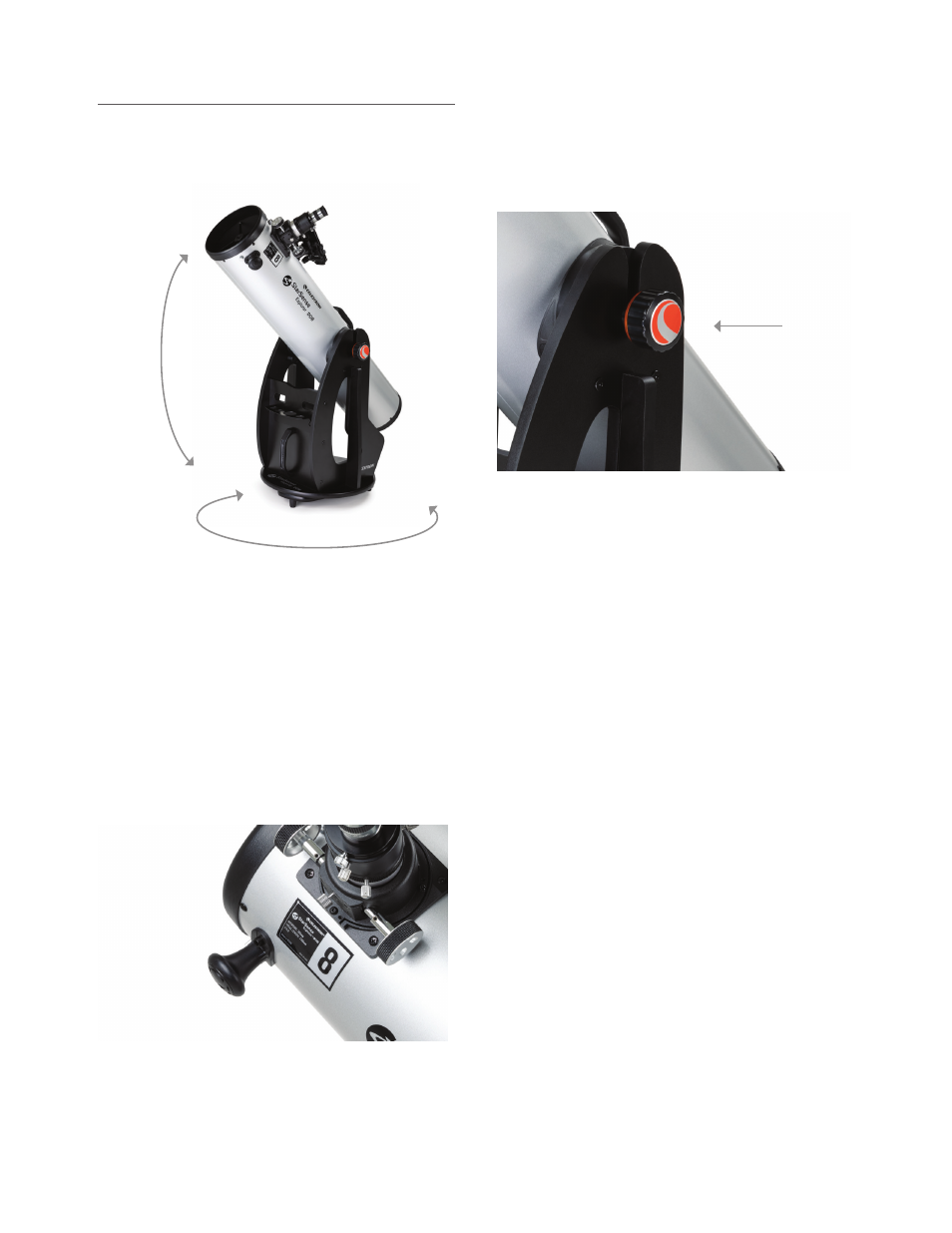Pointing the telescope – Celestron StarSense Explorer 12" f/4.9 Dobsonian Telescope User Manual
Page 7

ENGLISH
I
7
POINTING THE TELESCOPE
Dobsonian bases are altazimuth mounts. This means that
the telescope moves in two directions: up-and-down
(i.e. altitude), and left-to-right (i.e. azimuth) (Figure 2).
ALTITUDE
AZIMUTH
Figure 2:
The StarSense Explorer Dobsonians have two axes of motion:
altitude (up-and-down) and azimuth (left-to-right).
Pointing your Dob at an object is easy. Simply move the
telescope tube up-and-down and left-to-right until the
telescope is pointed toward the desired object and the object
appears in the telescope’s eyepiece. The panning knob at the
front of the telescope tube provides a convenient place to
grasp the tube for pointing (Figure 3). Using this knob also
prevents heat from your hand from entering the optical path,
which can temporarily distort the view.
Figure 3:
The panning knob provides an excellent place for your fingers to
grasp when pointing the telescope.
You can adjust the tension along the altitude axis by turning
the knob located on the same side as the telescope’s
focuser—the altitude tensioning knob (Figure 4).
Figure 4:
The tension of the altitude motion can be adjusted with the
altitude tensioning knob. (
NOTE:
the other knob on the opposite side does
not function for adjusting altitude tension.)
Turn the knob to add enough tension to provide a smooth
up-and-down motion. Under most circumstances you won’t
need to add much tension. The telescope is balanced for
normal use. However, if you are using a heavy eyepiece or a
larger smartphone, you may need to add more tension so that
the telescope remains still when not touched.
